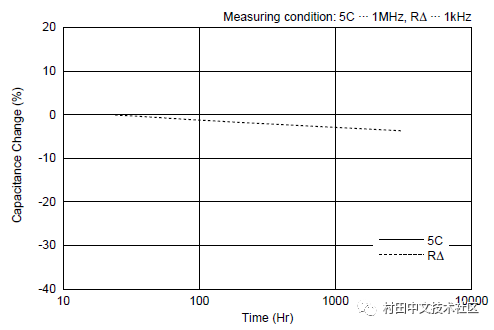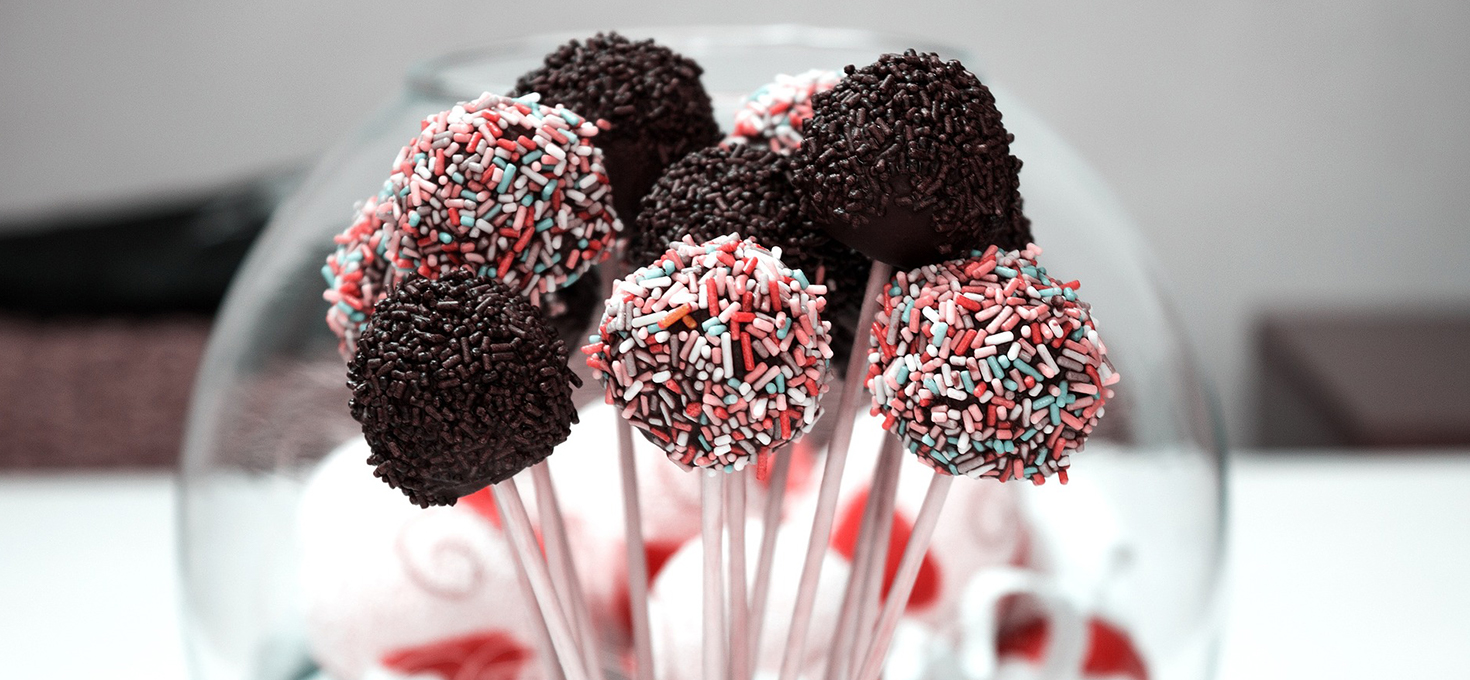Among ceramic capacitors, particularly high-capacitance series types such as B/X5R and R/X7R, the electrostatic capacitance tends to decrease over time. This phenomenon is especially important when these capacitors are used in critical applications like clock circuits, where stability and long-term performance are essential. It is crucial to evaluate this characteristic under real-world operating conditions and with the actual equipment being used.
For example, as illustrated in the figure below, the longer the capacitor is in operation, the more its actual capacitance decreases. On a logarithmic time scale, this decline appears nonlinear, showing a gradual reduction rather than a sudden drop.
* The horizontal axis of the graph represents the operating time in hours (Hr), while the vertical axis shows the percentage change in capacitance relative to the initial value.
As shown, this time-dependent decrease in capacitance is known as the "aging" or "temporal change" of the electrostatic capacitance.

It's worth noting that this aging behavior is not unique to Murata products. It is a common characteristic among all high-capacitance ceramic capacitors, but it does not occur in temperature-compensating capacitors, which are designed to maintain stable capacitance across temperature variations.
Additionally, if a capacitor has lost some of its capacitance due to aging, and it is heated to or above its Curie temperature (approximately 125°C) during processes like soldering, the capacitance can be restored. However, once the capacitor cools back below the Curie temperature, the aging process will resume.
**Principles of Aging Characteristics**
High-capacitance ceramic capacitors typically use barium titanate (BaTiO3) as the primary dielectric material. BaTiO3 has a perovskite-like crystal structure, which changes depending on the temperature.
At temperatures above the Curie point (around 125°C), BaTiO3 adopts a cubic crystal structure. In this state, the ions are evenly distributed, and no spontaneous polarization occurs.
However, below the Curie temperature, the crystal structure becomes tetragonal, with elongation along the C-axis and slight compression along the other axes. During this phase, Tiâ´+ ions shift in the direction of elongation, leading to spontaneous polarization — a polarization that occurs without an external electric field.
This spontaneous polarization is a key feature of ferroelectric materials and allows for the reorientation of domains under an applied electric field. This property is referred to as strong induction.

When heated above the Curie temperature, the crystal structure transforms from tetragonal to cubic, eliminating spontaneous polarization and domain structures.
Upon cooling below the Curie temperature, the crystal returns to a tetragonal structure, and spontaneous polarization and domains are re-established. This structural change introduces internal stress within the crystal grains.
As the material cools, small domains form within the grains. These domains have a tendency to align in a more stable configuration over time, such as 90° domains, to reduce the internal stress caused by the structural transformation.
In addition, charge carriers at the grain boundaries (such as slow-moving ions or vacancies) contribute to space charge polarization. This type of polarization interacts with the spontaneous polarization, making it harder for the domains to switch orientation under low electric fields.
Over time, the spontaneous polarization stabilizes, and the space charge polarization becomes more prominent, further resisting domain reorientation. As a result, the material requires a stronger electric field to induce phase transitions.
Since permittivity is directly related to the number of domains that can undergo phase transitions, a reduction in the number of responsive domains leads to a decrease in the overall capacitance. This explains why the capacitance of ceramic capacitors tends to degrade over time.
SG907MAX Xiang 3 high-definition Photography drone WIFI image transmission three-axis anti shake gimbal GPS return entry-level,We can customize remote control distance, flight time, and different pixel unmanned aerial vehicles according to customer

needs
Photography Drone,High Definition Photography Drone,Three Axis Anti Shake gimbal High definition Photography Drone
Jiangsu Yunbo Intelligent Technology Co., Ltd , https://www.fmodel-ai.com
